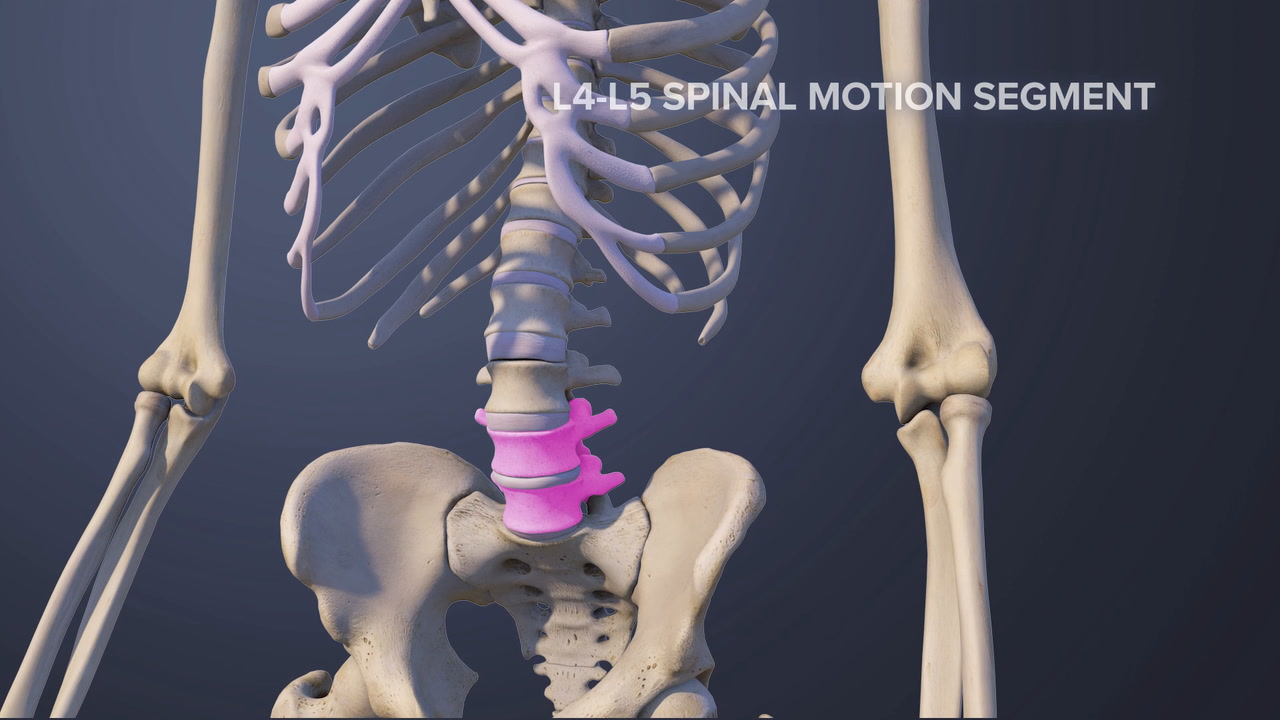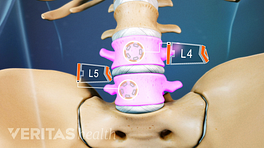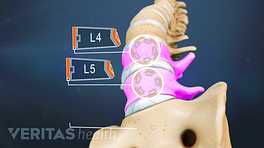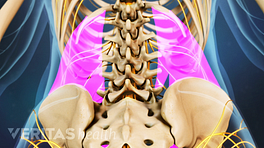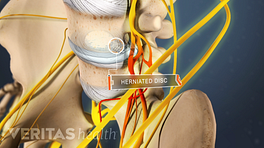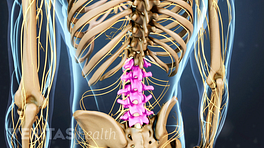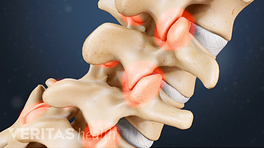The L4-L5 spinal motion segment is located in the lower portion of the lumbar spine and consists of L4 and L5 vertebrae, and the anatomical structures connecting them. This segment helps provide flexibility to the trunk and low back, supports the upper body, and protects the cauda equina and nerve pathways.
The L4 and L5 vertebrae are connected in the back by a pair of facet joints that allow limited forward, backward, and twisting motions. Articular cartilage enables the facet joints to move smoothly, while muscles, tendons, and ligaments help hold the vertebrae together. A strain or tear to any of these tissues can cause back pain and stiffness.
Between the vertebrae is an intervertebral disc that provides flexibility and shock absorption. The disc is made up of a tough outer ring called the annulus fibrosus, which encapsulates a gel-like interior called the nucleus pulposus.
The L4-L5 motion segment provides a bony enclosure for the cauda equina nerves that continue down from the spinal cord.
The L4 spinal nerve branches out from the spinal cord and exits on each side through the intervertebral foramen. It receives sensory information from the skin on parts of the low back, thigh, knee, leg, and foot. The L4 nerve also has a motor component that sends signals to various muscles in the back, pelvis, thigh, leg, and foot.
Spinal conditions including disc herniation or facet joint osteoarthritis may irritate the L4 nerve and cause radicular pain, tingling, numbness, and weakness along the path of the nerve. If the cauda equina is compressed at the L4 spinal level, it may cause severe pain, neurological deficits in the legs, and loss of bowel and bladder function.
In This Article:
- All About the L4-L5 Spinal Segment
- L4-L5 Treatment
- Spinal Motion Segment: L4-L5 Animation
